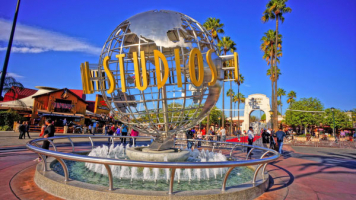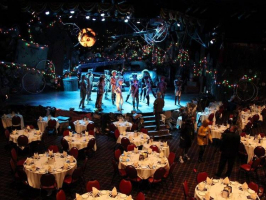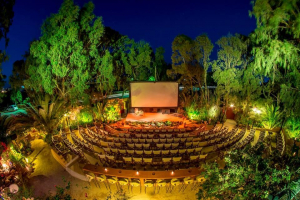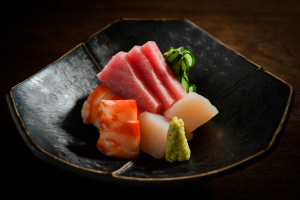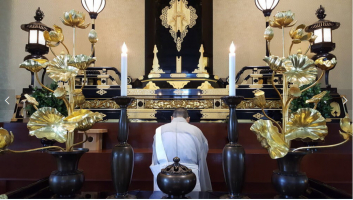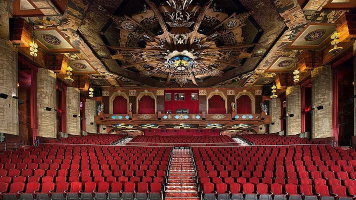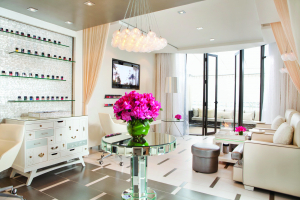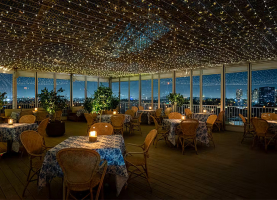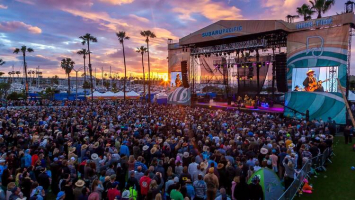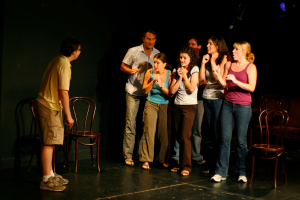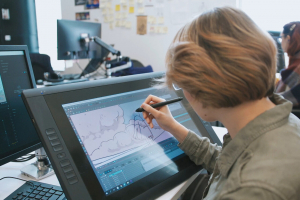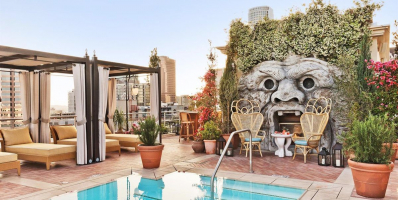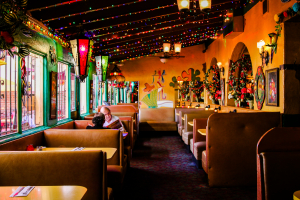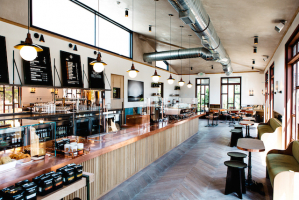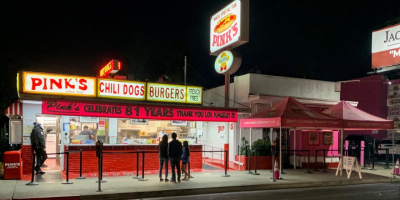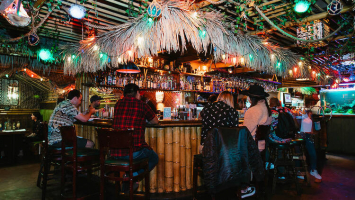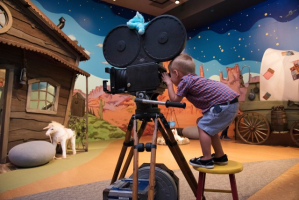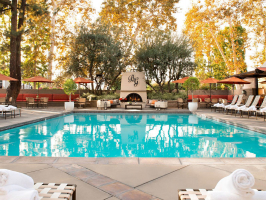Top 10 Best Historic Attractions in Los Angeles
There are numerous historic attractions in Los Angeles for tourists and people to discover, despite the fact that California is far younger than its East Coast ... read more...equivalents. There seem to be traces of L.A.'s past practically wherever you turn, from notable museums to noteworthy architectural landmarks and well-known parks. Join one of the top Los Angeles tours for a guided exploration of the city's past. Consider this selection of historic attractions your itinerary if you'd prefer to travel alone. For history lovers, it's unquestionably among the Best Historic Attractions in Los Angeles
-
Actually, Angels Flight is a tiny funicular that could: Over a century after it first began operating, the block-long railway has persevered through technical issues, prolonged closures, and relocation to continue carrying passengers up Bunker Hill. That is one of the best historic attractions in Los Angeles. The two-tiered vehicles that travel over its tracks provide an amusingly turbulent ride as well as a perspective of the Historic Core below. Either Hill Street or Olive Street can be used to board Angels Flight, however we advise choosing the former to avoid having to walk back up Fourth Street.
In the Bunker Hill neighborhood of Downtown Los Angeles, California, there is a famous and historic 2 ft 6 in (762 mm) small gauge funicular train known as Angels Flight. Its two funicular cars, Olivet and Sinai, travel in opposition to one another via a common cable. The rails travel 298 feet (91 meters) over a 96 foot vertical increase (29 m).
The funicular has used the same cars and station components while operating on two separate sites. The original Angels Flight facility, which had trackage running alongside Third Street Tunnel and tying Hill Street and Olive Street together, was in operation from 1901 until it was shut down in 1969 and demolished to make way for new construction.Founded: August 2, 1901
Location: 351 S. Hill St., Los Angeles
Contact: angelsflight.orgPhone: 213-626-1901
Price: One-way fare $1, with TAP card 50¢
Opening hours: 6:45am-10pm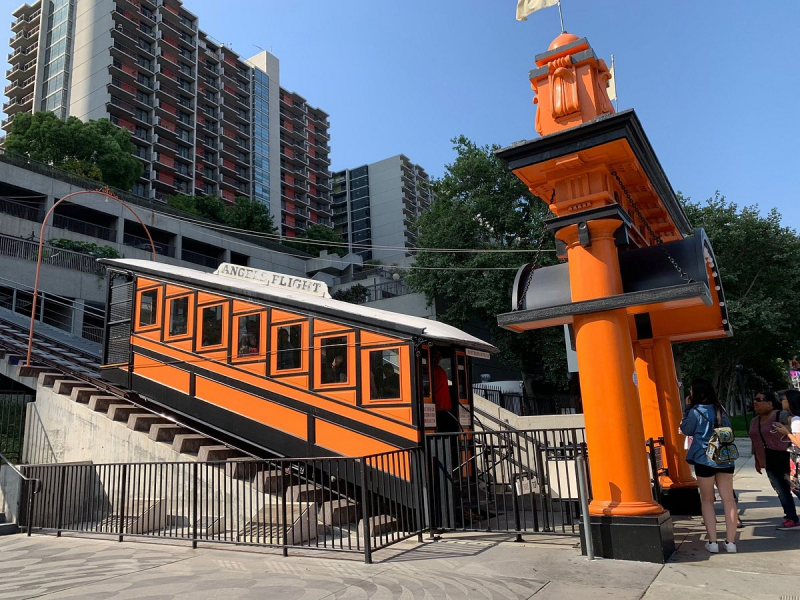
exp1.com 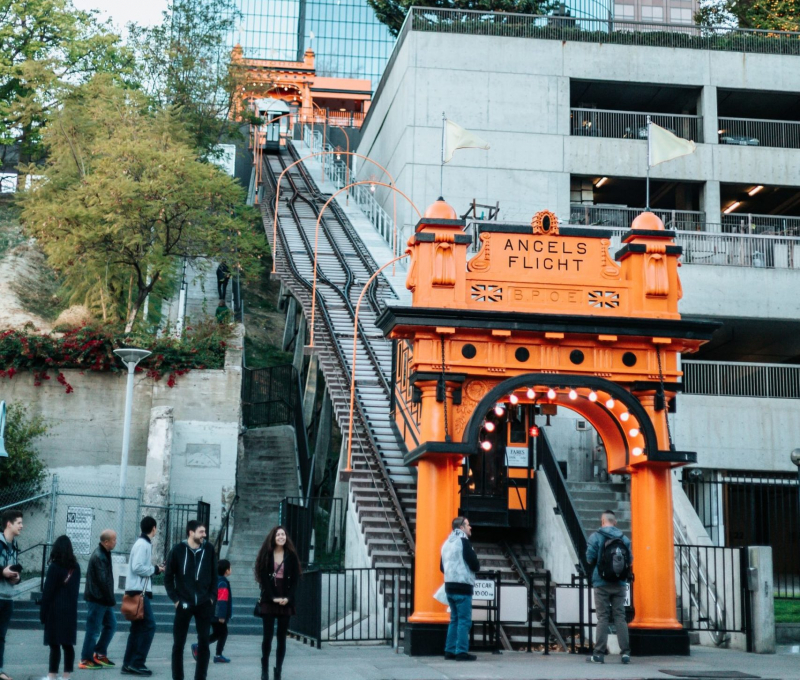
exp1.com -
One of the city's finest assets is Griffith Park, which spans 4,310 acres and is situated at the eastern extremity of the Santa Monica Mountains. A big urban park in North America, it is ranked as the second-largest city park in California due to its size. It dates back to a period many years before the city's development even got underway, when only Native Americans lived in the Southland. The Autry Museum of the American West, the Griffith Observatory, the Los Angeles Zoo, and the renowned Hollywood Sign are just a few of the well-known Los Angeles attractions that can be found within Griffith Park itself. Not only does Griffith Park have man-made attractions, but it also has mountains, canyons, and 50 miles of hiking trails. One of the best areas to explore in this area is the 50-year-old abandoned and undisturbed land with a diverse array of flora and fauna, as well as the climb up to Mount Hollywood, the park's highest point at 1,625 feet.
This terrain divides the park into numerous parts or "pockets" of activities because a large portion of it is made up of wild, untamed natural areas with hiking and horse routes. Concessions, golf courses, picnic spaces, pony and train excursions, and tennis courts are all located inside the various zones. The largest picnic area in the park, which is frequently used for sizable family gatherings, cultural fairs and festivals, reunions, and other special occasions, will be replaced by two baseball fields on the east side of Griffith Park in 2014. This project would involve the removal of 44 trees and the replacement of the picnic area, which is four acres (1.6 ha). The proposal might be changed to protect a sycamore that the city has designated as a "heritage tree," a living reminder of Los Angeles' past.
Founded: 1896
Location: 4730 Crystal Springs Dr., Los Angeles
Contact: www.laparks.org/dos/parks/griffithpkPhone: 323-913-4688
Opening hours: 5am-10:30pm daily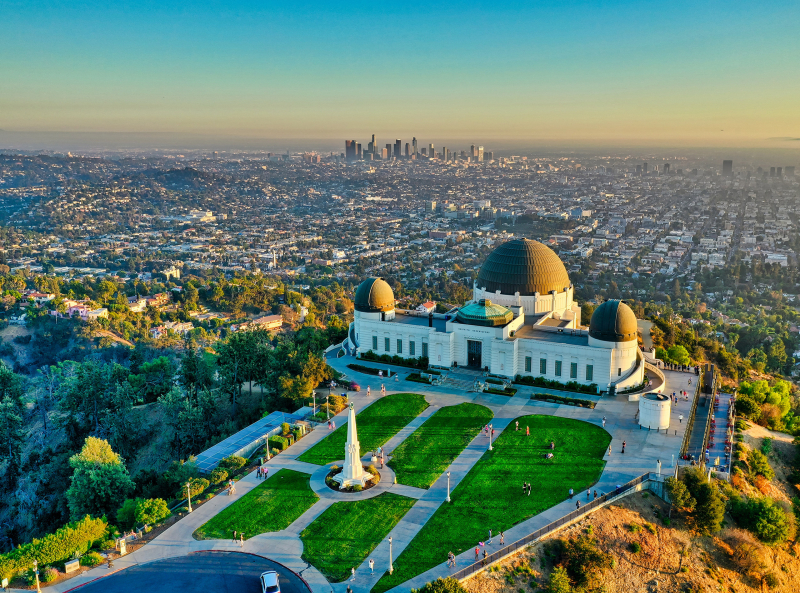
griffithobservatory.org 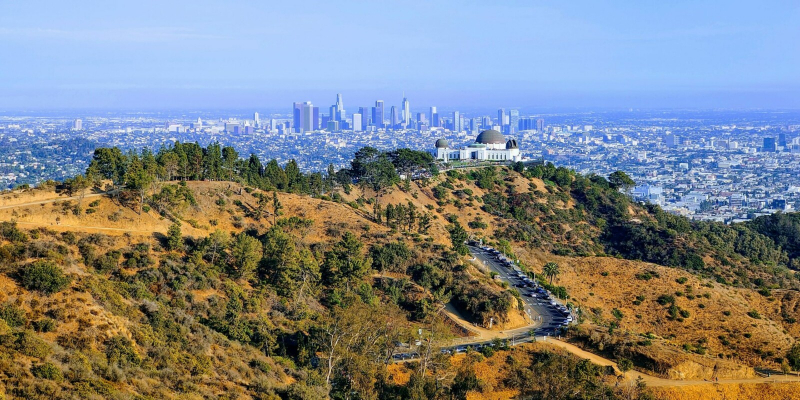
griffithobservatory.org -
The Beverly Hills neighborhood of Trousdale Estates is home to the Doheny Mansion, sometimes referred to as the Greystone Mansion. It is a spectacular mansion with Tudor Revival architecture that is surrounded by characteristic English gardens and sits over a groomed estate. Oil tycoon Edward L. Doheny lived there with his family for more than 60 years as part of his ownership of the estate. Despite the fact that it now bears the name "National Register of Historic Places" and is a public park, This 55-room, 46,000 square foot estate has an additional 16 acres of land surrounding it, all of which is accessible to guests. The mansion's spiral staircase is another one of the most well-known movie sets in Hollywood. The Greystone Mansion's high construction cost is another motivation to go there. It cost $4 million to build, making it at the time, the most costly residential structure in California. The Beverly Hills Flower & Garden Festival, the Annual Hollywood Ball, and Catskills West, a camp for theatre and drama, all take place at the estate site.
The Beverly Hills Flower & Garden Festival is one of the special events held at Greystone, which is now a public park. Because of its beauty, well-kept gardens, and location in Beverly Hills, it is frequently used as a filming location. Its maintenance and refurbishment are supported by some performances. According to the Upton Sinclair book Oil, the 2007 movie There Will Be Blood is partially based on the story of Edward Doheny. remodeled its two-lane bowling alley so that it could be featured in the movie.
The house hosts Catskills West, a theater arts and drama camp administered by Beverly Hills Parks and Recreation, from mid-June to early August each year, in addition to hosting various other events. Twice during the summer, the camp puts on a play by the pool.Founded: 1928
Location: 905 Loma Vista Drive, Beverly Hills, California, U.S.
Website: www.beverlyhills.org/Greystone
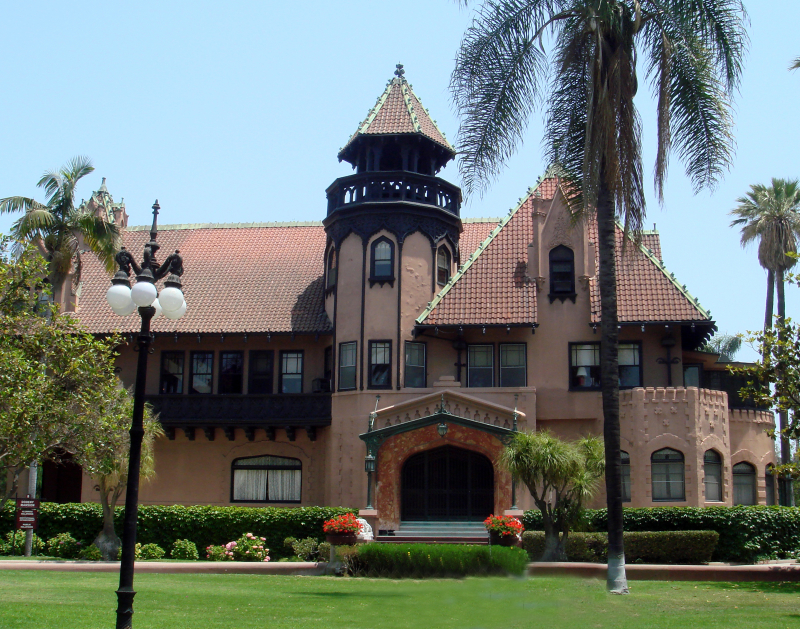
commons.wikimedia.org 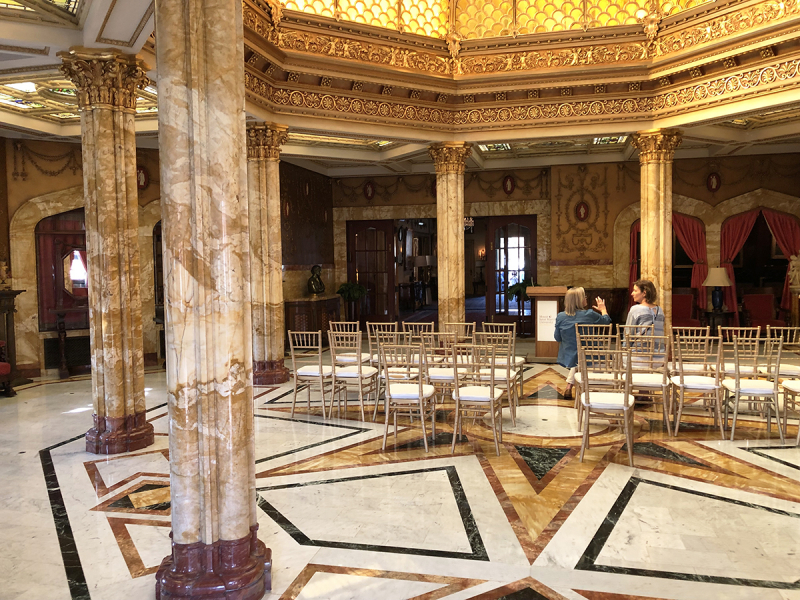
commons.wikimedia.org -
At the Heritage Square Museum, an outdoor architectural exhibit, you can see eight Los Angeles-area historic homes and buildings that have been designated on the municipal and national levels. It is one of the best historic attractions in Los Angeles. It is a living history museum that tells the tale of the tremendous growth of Los Angeles from the years 1850 to 1950. It is without a doubt one of the most well-known historical locations in Los Angeles. One of those places is Heritage Square Museum, where you may investigate South California's history, culture, and architecture all at once. The Palms Depot, the Longfellow-Hastings Octagon House, the John J. Ford House, the Mt. Pleasant House, the Carriage Barn, the Salt Box, the Valley Knudsen Garden Residence—Shaw House, the Lincoln Avenue Methodist Church, and the Hale House are among the area's historic structures. Your memories of the era will be brought back in the most pleasant way by the architectural settlement. Not to be missed on the grounds are a historic train car and a trolley car.
With the help of this living history museum, travelers can travel back in time and experience Victorian-era Southern California. Eight buildings make up the Heritage Square complex, all of which date back to the mid-to late 1800s. These include a church from Pasadena, a railroad station from Century City, and a number of previous individual homes from all around the city. All of them were transported to this central location after being raised off their foundations and saved from demolition. Some have already undergone restoration, while others are still being worked on. A particular delight is the guided tour given by a knowledgeable staff member who is dressed historically.
Founded: 1969
Location: 3800 Homer St., Los Angeles
Contact: www.heritagesquare.orgPhone: 323-225-2700
Price:$10
Opening hours: Fri–Sun 11:30am–4:30pm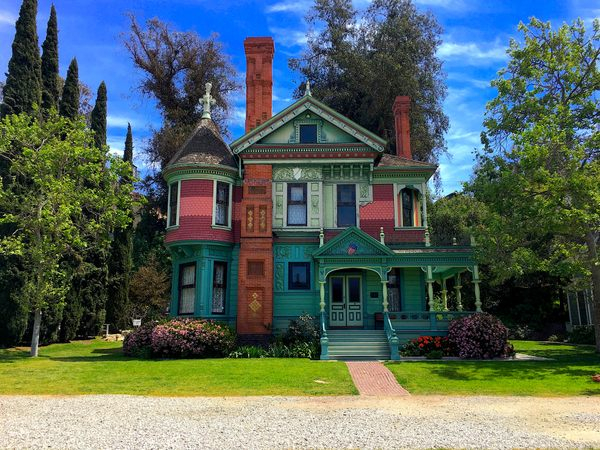
atlasobscura.com 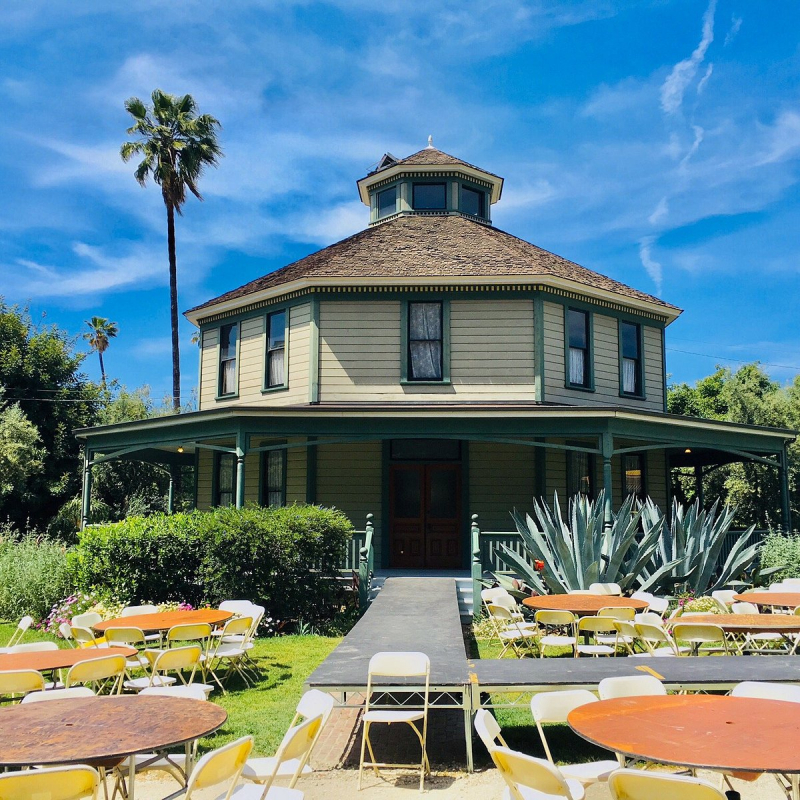
atlasobscura.com -
One of the best historic attractions in Los Angeles is the Bradbury Building. Architecturally significant, the Bradbury Building is located in the heart of Los Angeles, California. The five-story office building, which was constructed in 1893, is best renowned for its remarkable skylit atrium of access walkways, stairs, and elevators, as well as their decorative ironwork. Lewis L. Bradbury, a billionaire Los Angeles gold miner, commissioned Sumner Hunt to create the structure, which was then built by draftsman George Wyman. It has been the setting for several film and television shoots, music videos, and fictional works.
One of only four office buildings in Los Angeles to get this accolade, the structure was listed on the National Register of Historic Places in 1971 and was given the designation of National Historic Landmark in 1977. It is the oldest landmarked structure in the city and was also given that designation by the Los Angeles Cultural Heritage Commission.
The structure is a well-liked tourist destination. It is open every day, and a government employee who works there provides background information about its history. Only the first landing is open to casual guests. There are also brochures and tours available. The Grand Central Market, the Million Dollar Theater (across the street), and Angels Flight are three additional downtown Los Angeles monuments that are close by (two blocks away). Access is through the three-block-distance Civic Center exit of the Los Angeles MTA Red Line.
Founded: 1893
Location: 304 S. Broadway, Los Angeles, CA 90013
Phone: +1 213-626-1893
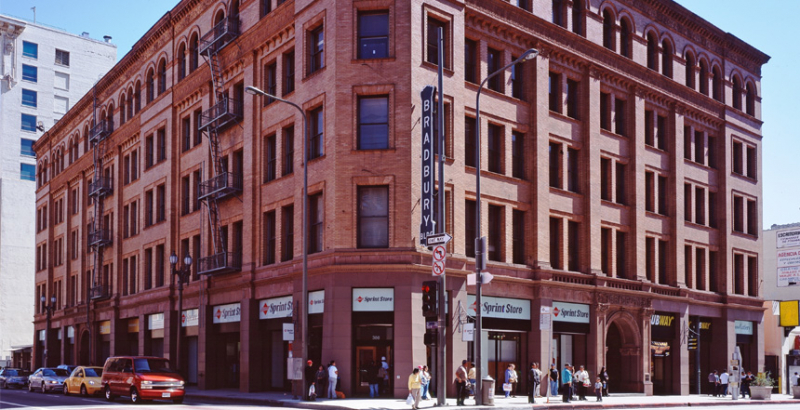
archpaper.com 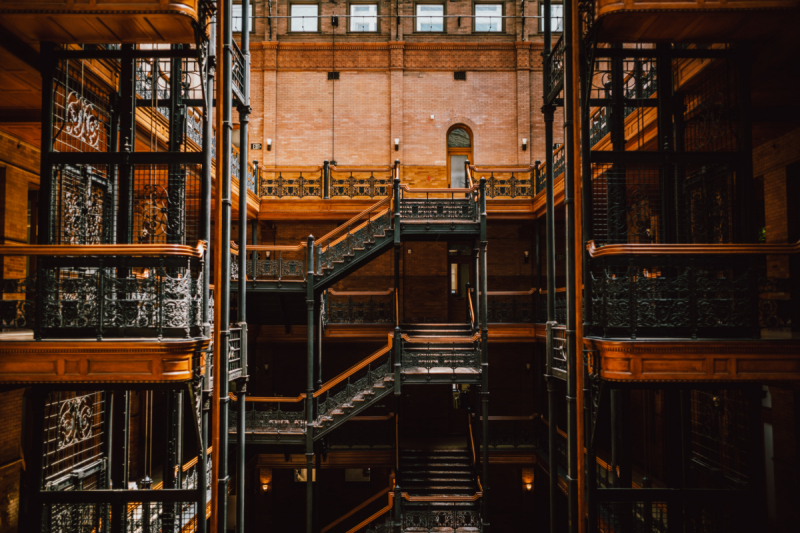
archpaper.com -
The El Pueblo neighborhood in Los Angeles, where the city was first founded in 1781 as a farming hamlet, features a traditional Spanish-style atmosphere. The region has 26 historical buildings, 11 of which are accessible to the general public, as well as the renowned Olvera street, which is lined with neighborhood independent vendors offering a variety of goods.
The El Pueblo de Los Angeles Historical Monument is one of the city's wonders, and it is situated in the oldest part of the city, a historic area. It is centered on the former plaza and is also referred to as the Los Angeles Plaza Historic District. It continues to be listed as a state historical monument and on the National Register of Historic Places. The first colonists of Los Angeles first made their home in this vibrant neighborhood in the year 1781. The Italian American Museum, the Sepulveda House, the Pelanconi House, the Eugene Biscailuz Building, as well as other wonderful museums can be found here. You can also explore the Plaza Methodist Church, the Old Plaza Firehouse, the La Placita Church, and other fascinating buildings. However, avoid scheduling your trip here for a Monday because the majority of the museums and structures are closed on that day.
Founded: September 1781.
Location: 125 Paseo de la Plaza, Los Angeles
Contact: belpueblo.lacity.orgPhone: 213-485-8372
Price: Free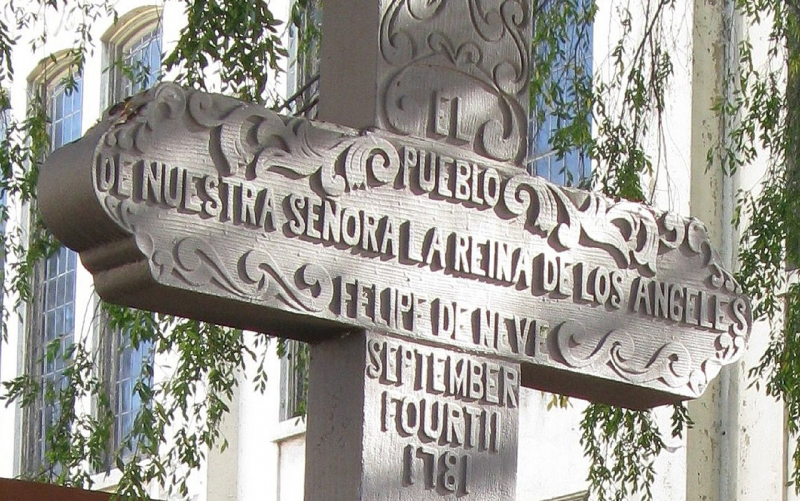
stringfixer.com 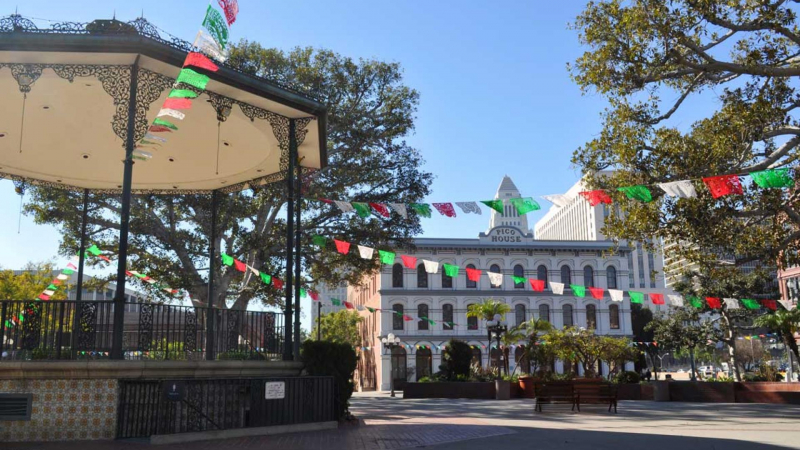
stringfixer.com -
In the Los Angeles area of Chinatown, there is a California State Park called the Los Angeles State Historic Park (LASHP), which is one of the best historic attractions in Los Angeles. The former brownfield, often called the cornfield, is a considerable open area between Spring Street and the Metro Gold Line rails. The region is southeast of and next to the Elysian Park neighborhood, which is situated outside the main commercial and residential district in Chinatown.
The lovely Los Angeles State Historic Park is located in downtown Los Angeles, near the Chinatown neighborhood. It is regarded as one of Los Angeles' most stunning historical locations. The historical park is 32 acres in size and offers city-related recreational and educational possibilities. It is a place where you may celebrate the city's natural and cultural legacy while taking a calm stroll with a view of downtown. Locals in Los Angeles refer to it as the "Cornfield," but husks are infrequently seen rising anywhere. There aren't many activities, but you can spend the day at the park lying down, jogging, biking, or running in peace and tranquility.
Founded: 2001
Location: 1245 N Spring St, Los Angeles, CA 90012, U.S.
Opening hours: 8am–8pm daily
Phone: +1 323-441-8819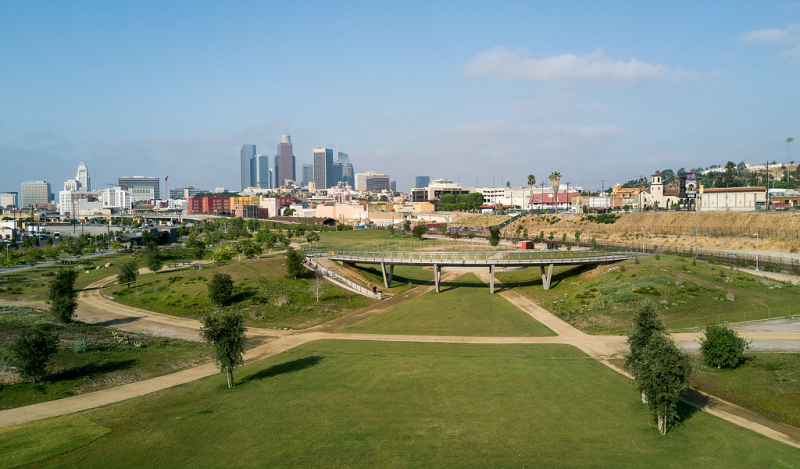
flickr.com 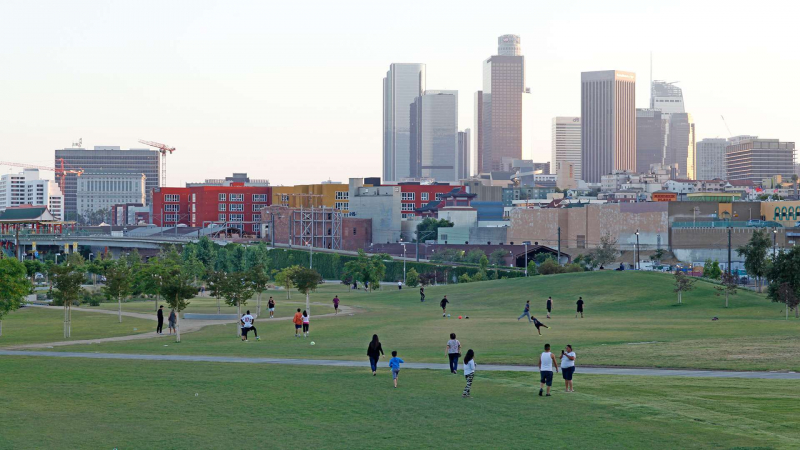
flickr.com -
The Watts Towers, an architectural marvel, were entirely the work of Sabato ("Simon") Rodia between 1879 and 1965. In the Watts neighborhood of Los Angeles, on Simon's original property, are 17 interconnected sculpture towers. The 103rd Street/Watts Skyscrapers station on the Metro A line of Los Angeles is only a half-mile away from the towers. This historical landmark and historical-cultural monument of Los Angeles was built over the course of 33 years by Italian immigrant and tile craftsman, Simon. All of the architectural work here is categorized as drawing inspiration from Italian-American nave art and Art Brut. The tallest tower measures 99.5 feet in height (outsider art). If towers and architecture excite you, this is the place to go in the direction of Los Angeles.
An neighboring community arts center is the Watts Towers Arts Center. The present building debuted in 1970. Prior to then, the Center ran its operations beneath a canopy close to the Towers. The non-profit Committee for Simon Rodia's Towers in Watts constructed the facility and hired the personnel. The institution conducts tours of the Watts Towers and regularly changes its exhibits of contemporary artwork. The Charles Mingus Youth Arts Center at the Center offers art workshops primarily to children and people with special needs from the neighborhood and neighboring communities. Media arts and piano lessons are offered through collaborations with Sony Pictures and Cal Arts. The final weekend in September is when the Day of the Drum and Jazz Festival takes place every year. There are live performances and craft stalls there.
Founded: 1886–1965
Location: 1727 E 107th St, Los Angeles, CA 90002, U.S.
Phone: +1 213-847-4646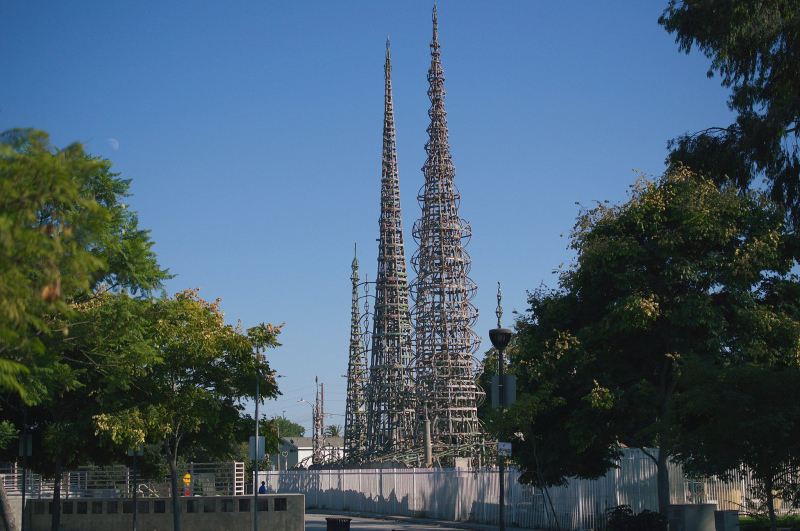
latimes.com 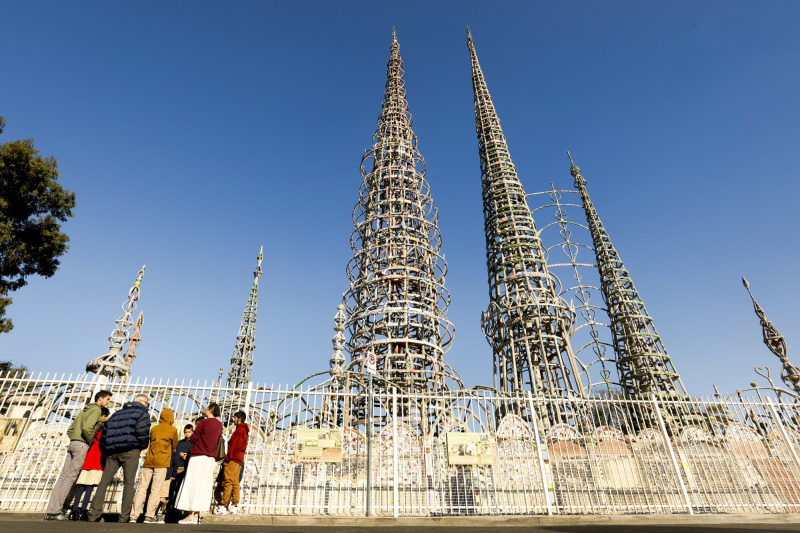
latimes.com -
Rancho Santa Anita, a farming outpost of the Mission San Gabriel, once included the location. In 1875, Elias Jackson ("Lucky") Baldwin purchased Rancho Santa Anita. When the State of California and the County of Los Angeles jointly purchased 111 acres, the arboretum was established in 1947. The architect, Albert A. Bennett, the father of Baldwin's fourth wife, created the Queen Anne Cottage. Plants are arranged according to location. Additionally, there is an Aquatic Garden, Prehistoric Garden, and a herb garden. Here, scenes from the movie Jurassic Park were filmed.
The County Arboretum and Botanic Garden is located in Arcadia, Los Angeles, on top of the hills that border the San Gabriel Mountains, covering what's left of Rancho Santa Anita. The arboretum, historical site, and botanical garden are situated across 127 acres and are accessible to the general public every day. The County Arboretum is attractive, calm, and meandering, bringing visitors close to lovely rose gardens, iris gardens, peaceful mountain views, many ponds, lakes, a few waterfalls, and limitless study of both nature and human efforts. Several structures on the property, including art institutions and libraries, are designed in the Victorian architectural style. The County Arboretum and Botanic Garden is the place to go if you're over the rush and bustle of the City of Angeles so you can concentrate on the beauty all around, take in the scenery, and admire nature.
Founded: 1947
Location: 301 N Baldwin Ave, Arcadia, CA 91007, U.S.
Phone: +1 626-821-3222
Opening hours: 9am–6.30pm daily
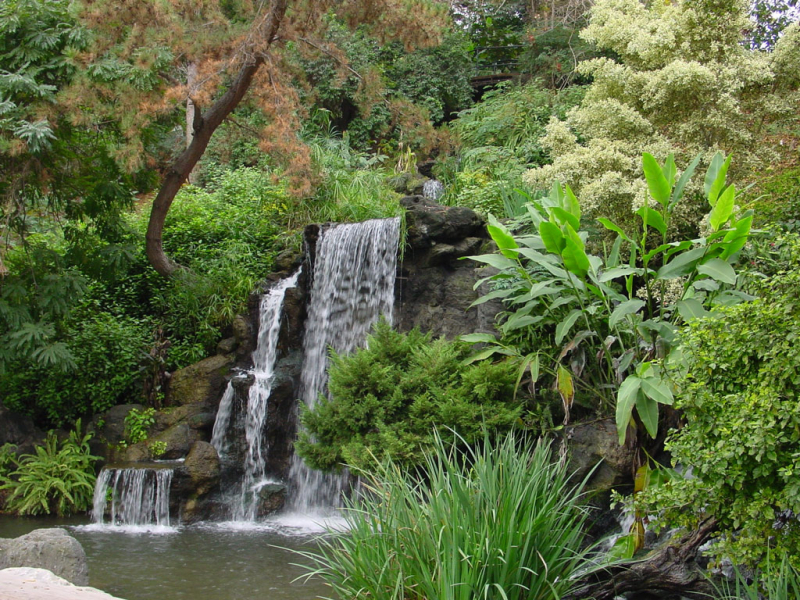
gardenvisit.com 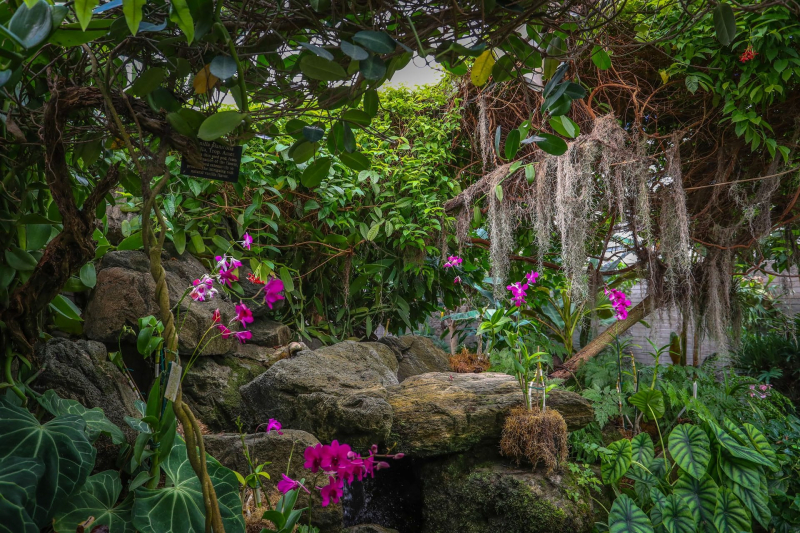
gardenvisit.com -
The Eames House is a historic landmark from the middle of the 19th century and is situated at 203 North Chautauqua Boulevard in Los Angeles. It is a historical site with contemporary architecture that receives more than 20,000 visitors a year and is being maintained by the Eames Foundation. In the year 2006, the Eames House was added to the United States' list of National Historic Landmarks. Case Study House No. 8 is another name for the Eames residence. It was commissioned by Arts & Architecture magazine as a part of a project that tasked architects with creating affordable yet modern residences in Southern California. Originally owned by husband and wife design pioneers Charles and Ray Eames, it was passed down to their daughter Lucia Eames as a non-profit organization and museum after their passing.
Visitors can self-guide their tour of the outside for $10; bookings are necessary. By parking a few blocks away and ascending the steep driveway. Interior tours are more challenging to find: An appreciation day for members is always planned around the Eames' birthday on June 20. Anyone may reserve a private tour for an hour ($275/$200 for members), but if you're a true admirer of Charles and Ray Eames, you might want to spend more money on the lunch for four in the meadow ($750/$675 for members).
Founded: 1949
Location: 203 Chautauqua Blvd., Los Angeles
Contact: eamesfoundation.orgPhone: 310-459-9663
Price: $10; students and children free.
Opening hours: Mon-Tues and Thur-Sat 10 am-4 pm; closed Wed and Sun.Website: https://www.timeout.com/los-angeles/attractions/eames-house
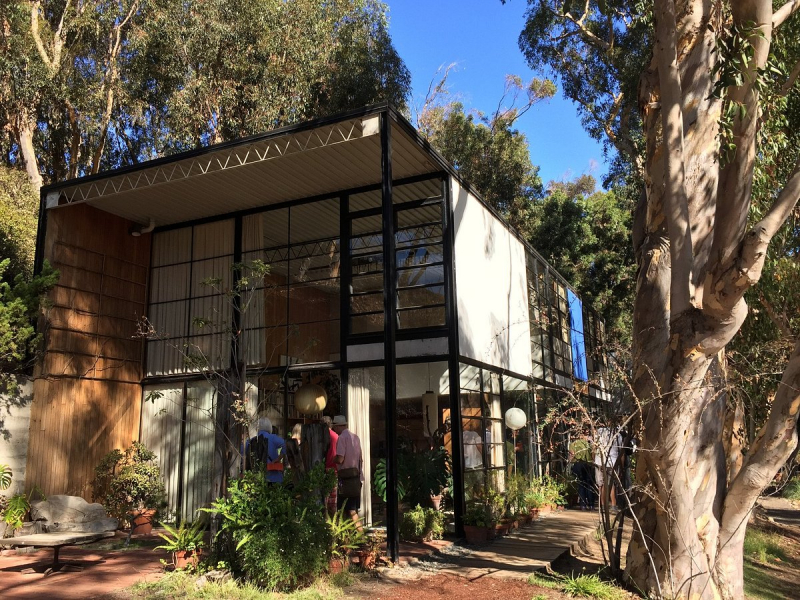
tripadvisor.com 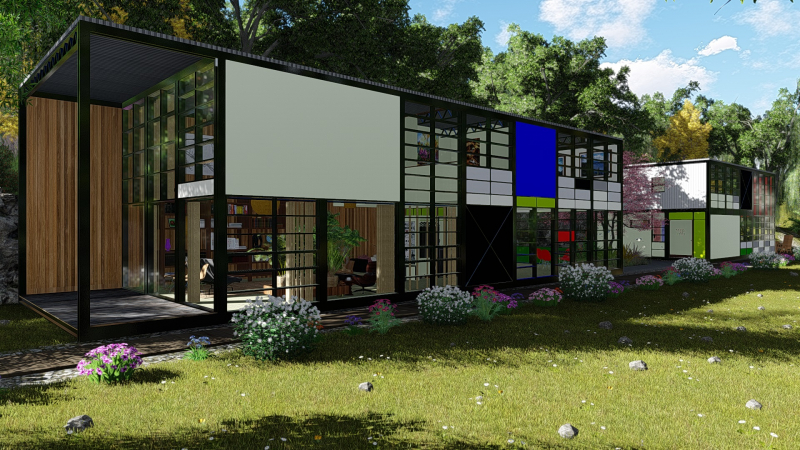
tripadvisor.com












